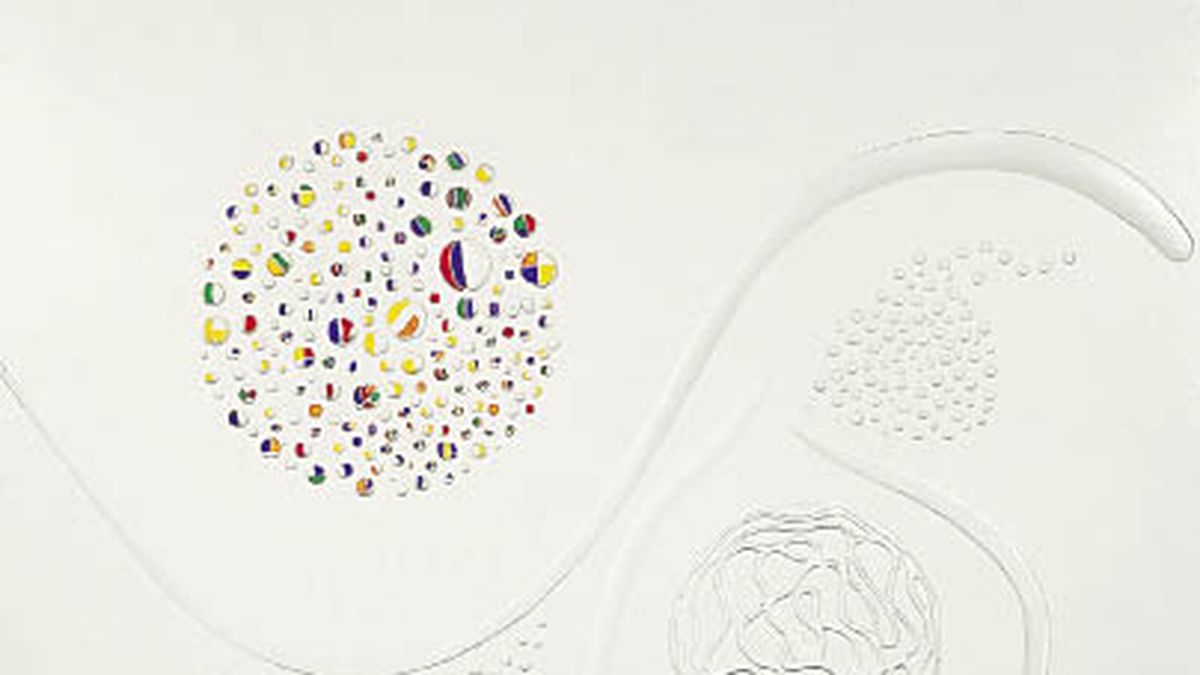Also the relationships between time and space, spatial time continuum, cosmological painting, a repertoire in which the artist sought solutions to the mystery of the universe. In 1950, his works of a traditional character turned to abstraction when thanks to a scholarship he lived in Paris between 1951 and 1952 where he met Fernand Leger, Max Bill, Georges Vantongerloo. He is the author of the prologue of a valuable book on the writings of the latter, a Belgian artist (1886-1965) to whom in 1987 the National Museum of Fine Arts of Belgium dedicated an important exhibition.
There is a curious coincidence in their lives: Vantongerloo voluntarily isolated himself from all the isms of the moment and Magariños D. took refuge for 26 years in Pinamar where he drew, reflected and wrote in his home-workshop, converted in 2002 into a museum, thanks to the impulse of his wife Dolores Rubio.
Both Vantongerloo and Magariños D. reflected on the presence of meaning in artistic discourse, the first through mathematical calculations, the second through geometric progressions.
The work of this artist is for those who are sensitive to the relationships established on the plane in order to capture what emerges from them. In “Abstract Art – Crossing lines from the South”, Mario H. Gradowczyk pointed out Magariños D.’s interest in nuclear physics, new mathematics, cybernetics and genetic engineering since the artist “has the obligation to imagine a metaphysics that expresses the scientific, philosophical, aesthetic questions of contemporary thinkers”.
It is always important to return to this secret artist – his work has not been shown for 15 years -, an important selection from the 50s to the early 90s that takes place at MCMC curated by Marcelo Pacheco, entitled “In silence.”
The title, Pacheco points out, alludes to the fact that Magariños D. belongs to those who, according to Derrida, “should only pass in silence”.
Pacheco describes Magariños D. as someone who does not get distracted by making novel artifices, but rather insists on an alphabet that exhibits the virtues of the laws of vision and perception.
Also art and science is one of the most provocative chapters of the artist’s work and his production of paper, fabric, cardboard, working with the unexpected fiber, tempera and glue.
For Pacheco, “writing about this artist is a dilemma that is not related to art but to historiography, to the narrative that is described between elements, meanings and signs.”
Magariños D. belonged to modern art but in the 1960s, when he created his cosmologies, he became a contemporary artist. A part of Pacheco’s text alludes to his creations as inventions of energy that do not stop vibrating and lists everything that appears on the support: colors, rhythms, arabesques, symbols, crosses, flags, masts, orographies, lakes, patterns, X’s. , fractured or endless lines.
Magariños D. was also a thinker and writer who left important texts throughout his life, for example, “Emilio Pettoruti: precursor or reactionary” (1962), “The pictorial art and the artist of today” (1965) in the that cites Cézanne, Seurat, Van Gogh, Gauguin and many others who have left their mark on the history of art. “Every work of art contains a concept, an idea, or a sensation, but the most important thing is not only that they are seen but also the quality of the language that was used to materialize it”, he once wrote. (MCMC, José León Pagano 2649).
Source: Ambito
David William is a talented author who has made a name for himself in the world of writing. He is a professional author who writes on a wide range of topics, from general interest to opinion news. David is currently working as a writer at 24 hours worlds where he brings his unique perspective and in-depth research to his articles, making them both informative and engaging.




